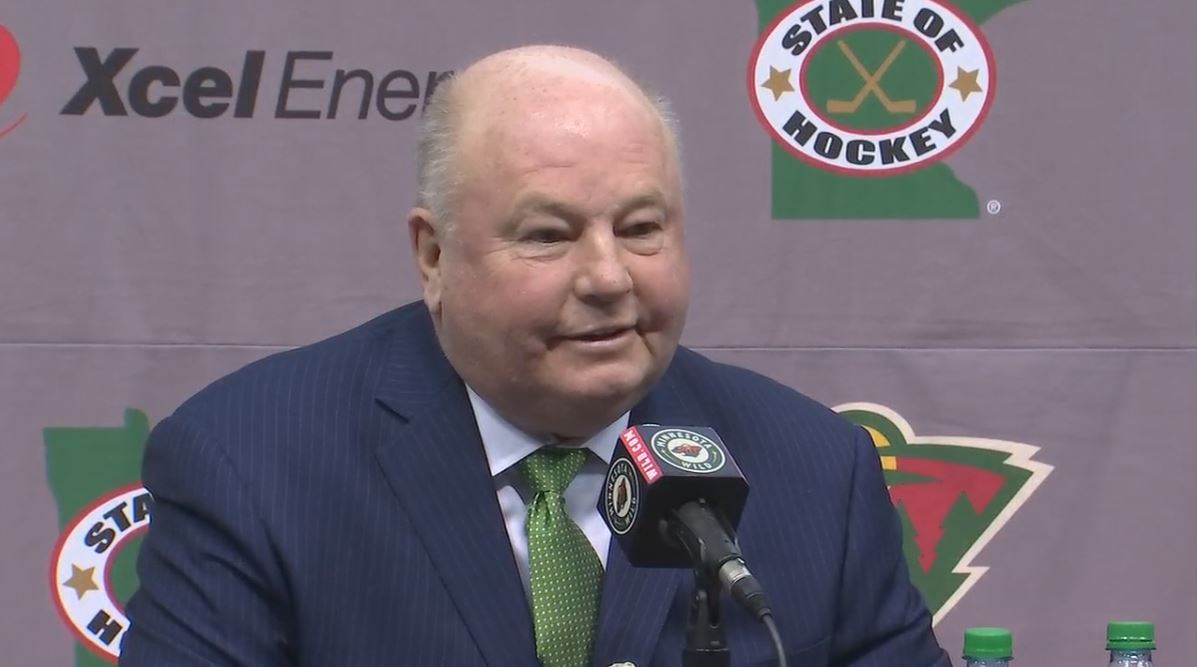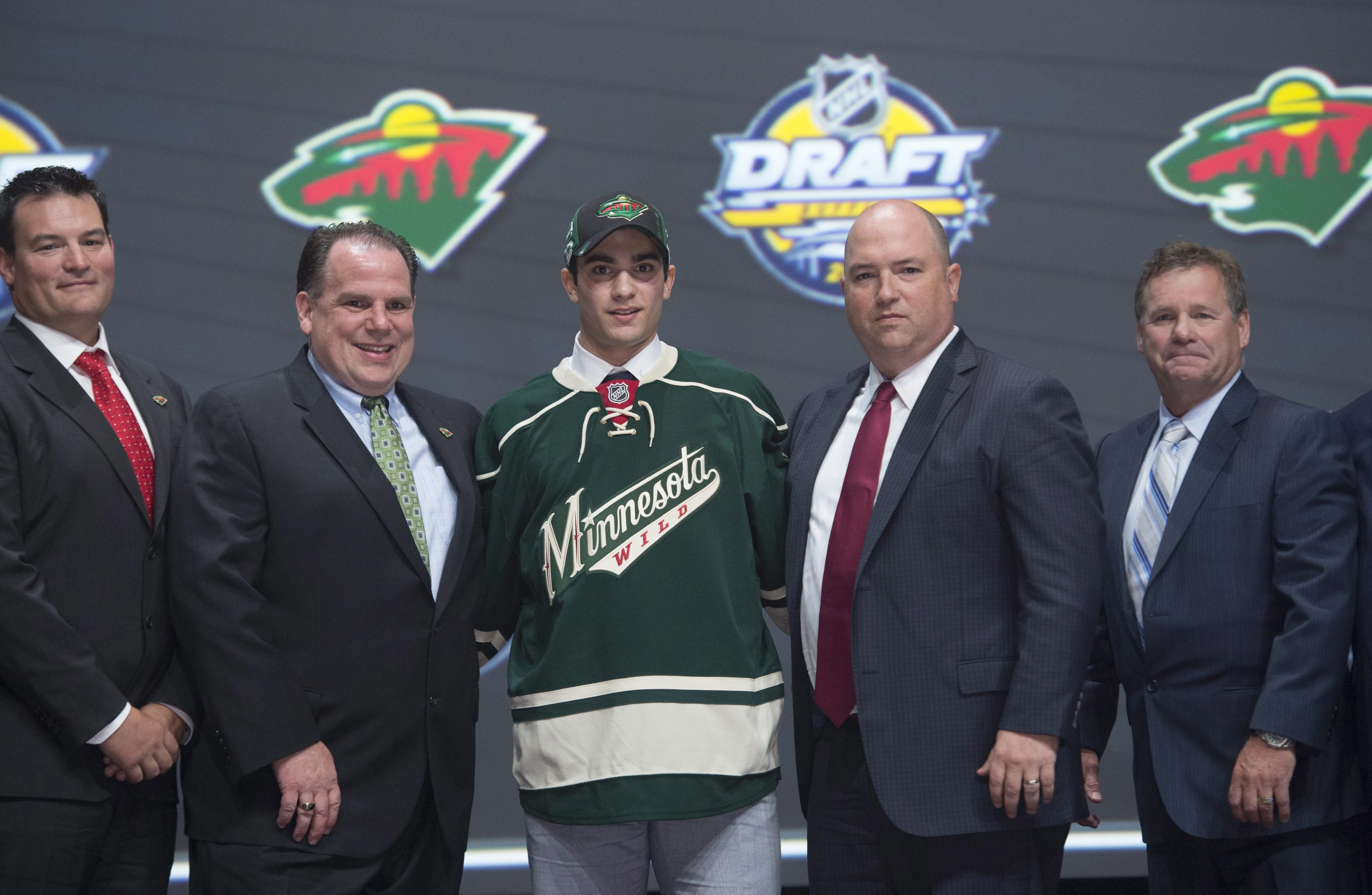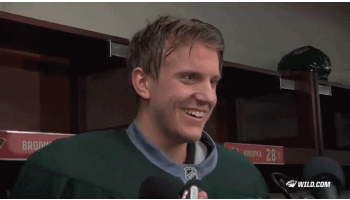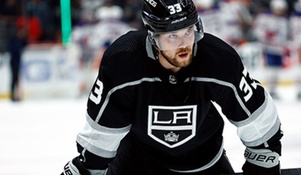NHL Midseason Report: Are the Minnesota Wild contenders?
Estimated Reading Time: 13 minutes
There’s a different feeling around the Minnesota Wild this season. We’re almost to the All-Star break and there has been no midseason slump to speak of. The team is leading the Western Conference in Point Percentage Earned, Goals For, Goals Against, and (obviously then) Goal Differential. So, what has changed for Minnesota? That requires a quick analysis of the recent franchise history.
Mike Yeo became the third coach in Wild franchise history in the summer of 2011. To say his tenure as head coach was filled with ups and downs would be an understatement. In his first season, he had an overachieving club the first few months as they started 20-7-3, however the team managed just 15 wins the rest of the season and finished well adrift of a playoff spot, as well as being the lowest scoring team in the NHL.
The lockout shortened 2013 NHL season brought plenty of promise for Minnesota, after inking Zach Parise and Ryan Suter to mammoth contracts, they were widely expected to vastly improve. Figure in highly touted rookies Mikael Granlund, Charlie Coyle, Jason Zucker, and Jonas Brodin, and many pundits declared the Wild Stanley Cup Contenders for years to come. Although obvious holes remained, as the team lacked a top end center and a reliable goalie (more on that later). The 2013 team barely scraped into the postseason (a theme of the Mike Yeo era) and lost to the Chicago Blackhawks in the first round of the playoffs (another theme of the Mike Yeo era).
2013-14 was a steady season for Minnesota, six-game losing streak at the end of December notwithstanding. This was also the first of three consecutive seasons in which the Wild faced the Central division champion to start the playoffs. They dispensed of Colorado in an intense seven-game series (the highlight of my Wild fandom to date) with Swiss-born Nino Niederreiter scoring the series-winning goal.
Niederreiter was acquired at the 2013 NHL draft from the New York Islanders, who badly mismanaged him as a player, so Wild General Manager Chuck Fletcher swooped in and attempted to reignite his career. Coincidentally, this gave the Wild four young and talented forwards who were taken in the 2010 draft; Niederreiter, Granlund, Coyle, and Zucker. Fletcher drafted Granlund and Zucker, and traded for both Coyle and Niederreiter.
Back to the 2014 playoffs, Minnesota played a solid second round series against Chicago, before losing in six games. Most Wild fans saw the 2014 playoff run as a positive and a sign of better things to come, little did they know more of the same was on the way.
The 2014-15 edition of the Minnesota Wild was easily the best team of Mike Yeo’s tenure in Minnesota. They scored 231 goals and had a goal differential of +30 to achieve just the second 100-point season in franchise history. Yeo’s impact on the season, however, is debatable. Minnesota lost 12 of 14 games from December 2014 through January 2015 before GM Fletcher swung a trade for goalie Devan Dubnyk. Dubnyk had bounced around many teams after once being a highly-regarded prospect in Edmonton. Given the goaltending woes of the team, Dubnyk was a welcome relief.
After the trade, the team went 28-9-5 to secure a playoff spot, charging up the Western Conference standings the last two-and-a-half months of the season. After defeating the Central Division champion St. Louis Blues in the opening round of the playoffs, a date with the Blackhawks was on the cards again. This time the series ended in a Blackhawks sweep. Unknown at the time, this was Mike Yeo’s last playoff series with the Wild.
2015-16 was seemingly yet another season of making the playoffs despite Yeo’s efforts as coach. Yeo had Minnesota in a great position halfway through the campaign, with a franchise record 52 points in the opening 41 games. Over the next month, the team lost 13 of 14 games, and this reoccurring mid-season swoon is one of the main reasons Yeo was fired in February 2016. I would include reasons such as inability to get past Chicago in the playoffs, as well as seemingly stagnating player development with the young forwards on the team, for his firing as well. Overall, Yeo was still a successful coach for the young franchise, he won two playoff series, made three-consecutive playoff appearances, and holds the lead for winning percentage by a full-time coach.
I realize this summary was a bit long-winded, but I think it is all pertinent information for understanding the context of this year’s Wild. After Yeo’s firing, interim coach John Torchetti decided to move Mikael Grandlund to the wing. This is a change that the team is better off for currently. In the end, the 2016 Wild squeaked into the playoffs under the guidance of Torchetti, before losing in the first round to Dallas. Despite the honorable efforts of Torchetti to get the franchise to the playoffs, making the playoffs was simply not good enough for a roster with this much talent.

GM Chuck Fletcher made two bold moves this past summer to kick start his franchise. First, he hired recently fired Anaheim Ducks coach Bruce Boudreau to be his new bench boss. Boudreau has won 8 division titles in his 9 seasons as an NHL coach with both the Washington Capitals and Anaheim Ducks. Such a remarkable record does not appear on the NHL coaching market often, however Boudreau does not have such a sterling Stanley Cup playoff record, having failed to even make an appearance in a Stanley Cup Final. Fletcher took a risk on Boudreau, no doubt, but it was clearly a nod to improving the team’s regular season performance with the thought that he could cure the playoff demons eventually. Obviously, Boudreau still has the regular season thing down, as the Wild currently sit with a record of 30-11-5. This year the team went on a mid-season, 12-game winning streak instead of the losing streak that many Wild fans are accustomed to.
The second risk Fletcher took was on veteran center iceman Eric Staal. Staal has a tremendous pedigree and is well known for winning the Stanley Cup in 2006. Before coming to Minnesota, he had nearly 800 career points, but his play had slipped in recent years partly due to frequent injuries. Staal sign for $10.5 million over 3 seasons, a deal that would turn into an absolute steal should Staal return to form. Luckily for Minnesota, Staal has been in vintage form most of the season. He leads the squad in goals (16) and points (40).
Staal’s presence has taken immense pressure off captain Mikko Koivu, who is no longer expected to shoulder the load of a top line guy by himself. Koivu is one of the premier two-way centers in the game, and to have a luxury of rolling with two great veterans like Staal and Koivu down the middle is a huge coup for coach Boudreau. With a big 6’ 4’ frame and a booming wrist shot, Staal is the prototypical #1 center NHL franchises crave.
So, it seems the Wild have acquired that franchise center I mentioned earlier, but how about their search for a top-tier goalie. Well, Devan Dubnyk has been just that since he was acquired over two years ago, from Arizona. This season he has posted a 1.91 Goals Against Average, .935 Save Percentage, and 5 shutouts in 36 starts. His GAA and Save % are both tops in the NHL, and this is despite a recent string of average performances. Chuck Fletcher has done well to acquire top-tier talent at arguably the two most important positions on an NHL roster, goalie and # 1 center, but it is the development of his former prized youngsters that has made the Wild an even bigger force this season.
After the disappointing 2015-16 campaign, many Wild fans felt the franchise had peaked and was due for regression. With copious amounts of money tied up in players on the wrong side of 30, (Koivu, Pomminville, Parise, Suter, and Dubnyk) it was up to the youngsters to finally produce at their anticipated levels if the Wild were to move forward. And with most of them at least 23 years of age, it’s hard to call them youngsters in today’s NHL.
Mikael Granlund represents the offensive renaissance that has occurred within the Wild organization. Since moving over to play the wing near the end of the last campaign, Granlund has blossomed into the dynamic forward he was projected to be. The playmaking ability has always been apparent, but Granlund was too passive with the puck in previous years. This year he is moving beyond ‘taking what the opponent will give him’ and creating offense for himself and his teammates. The confidence and aggression he is playing with is unparalleled to anything seen from him in the Mike Yeo years. Granlund is poised to set career highs in goals, assists, points, shots, and shooting percentage. As of now he is on pace for nearly 20 goals and 70 points, the type of production expected of a former top 5 draft choice.

Another player reaping the benefits of Granlund’s successful transition to wing is Jason Zucker. Zucker, known primarily for his sniping abilities, was coming off a disappointing 2015-16 season where he only tallied 23 points in 71 games. This made him a potential target of the new Las Vegas expansion franchise in the coming NHL Expansion draft, especially because Vegas is Zucker’s hometown. Chuck Fletcher may need to make plans to keep Zucker in Minnesota now, especially given his terrific two-way play this season. Zucker has already set careers highs in points (32) and assists (18) through 46 games. In fact, he has tallied nearly as many assists this season as he had in his previous 169 NHL games spanning five seasons (19 career assists coming into the year). The chemistry between Granlund and Zucker, centered by Mikko Koivu, has produced great results and a reliable second scoring line
Big, bruising power forward Charlie Coyle has helped buoy the first line, alongside Eric Staal much of the season so far. Coyle is the one young forward who under Mike Yeo seemed to show steady, albeit slow, progress. This is a common path for power forwards in the NHL, they often mature slower than their more skilled, faster counterparts. Coyle is no exception, although I might add speed and skill is not something Coyle wholly lacks. He has increased his point total each season he’s been in the league, and this year appears no different. His career high of 42 points is in serious jeopardy as he currently sits on pace for 65 points. Suddenly, the hopes of Wild fans for a perennial 25-30 goal-scoring power forward don’t seem so farfetched.
And now we check in on Chuck Fletcher’s reclamation project, Nino Niederreiter. Nino was rushed to the NHL by a desperate Islanders franchise, and forced to play on the fourth line with career goons for 64 games over two seasons. To nobody’s surprise he had just 3 points in those 64 games. During the lockout-shortened 2013 season, his agent had a rift with Islanders management, and that signaled the end of his days in New York. Nino has been an extremely reliable and flexible player since joining the team. He has bounced around on countless different line combinations, and has missed only 3 games in 4 seasons in Minnesota. Nino will unlikely ever be a superstar, but his .512 points per game number since joining the Wild speaks to his valuable offensive contribution. And Nino, like his fellow 2010 draftee teammates, is also well on pace to set career a high in points after a solid start to the season (14 goals and 18 assists).
I would be remiss if I failed to talk about the Wild’s stable of great of defenseman. Solid, puck moving, and smart defenseman can be the lifeblood for and NHL teams’ success. The Wild easily fall into that category. Veteran Ryan Suter has been playing a heavy dose of minutes on the blueline since he joined the team in 2012, he even has 30 points to show for his efforts this season. Diminutive Jared Spurgeon is one of the most steady and consistent guys around, and is a valuable contributor to the power play scheme. It’s hard to find a more underrated defenseman that Spurgeon, except perhaps his own teammate Jonas Brodin. Brodin is one of the smoothest skaters in the NHL, ala fellow Swede Nicklas Lidstrom. Although he doesn’t produce the points of Lidstrom, players in his mold are increasingly valued in an NHL where transition play is king. Finally, 2012 first rounder Matt Dumba is coming into his own as a polished NHL blueliner. Known in his junior hockey days for his booming slap shots and thunderous hits, his game has matured steadily to the point where he can be trusted, on most nights, for top four minutes. Dumba is still a little mistake prone and gets frequent chewing-outs from the coaching staff, but his potential is still rather high.

This leaves quite the dilemma for Fletcher and the front office, he may only protect three defensemen from the NHL Expansion draft this coming summer. Although current logic points to leaving Dumba unprotected, it would sting to lose a defender with such high potential, especially given the Wild’s current lack of strong prospects on defense. This is the price Fletcher must pay for building a deep NHL roster, and other NHL GM’s will be fretting the same types of decisions Fletcher must make. The Wild will also face the possibility of losing a forward, such as Erik Haula, in the draft, but Vegas may only choose one player from each franchise. Losing a forward would certainly be less of a burden long-term for Minnesota, with World Junior standouts Joel Eriksson Ek, Luke Kunin, Kirill Kaprizov, and Jordan Greenway all filtering into the lineup over the next few seasons.
Why are the Wild enjoying such success this season? It seems Bruce Boudreau knows how to get the most out of his players with his unfiltered motivational style. Eric Staal and Devan Dubnyk have come on in recent seasons to fill holes in an otherwise solid roster. Veterans Mikko Koivu and Ryan Suter are having great seasons even when logic suggests they are past peak. Youngsters Mikael Granlund, Jason Zucker, Charlie Coyle, and Nino Niederreiter all seem to be excelling at the same time. Unheralded guys such as Jonas Brodin and Jared Spurgeon have been immensely good on defense. All of these decisions were made by Chuck Fletcher, Koivu being the only player on the roster not acquired by him. This is Fletcher’s brainchild for better or for worse and it appears that he has done a great job with it, at least for the moment. And for potentially no other reason than luck, the team has avoided injuries for much of the season, although Brodin is expected out a month as of now due to a hand injury.
The Minnesota Wild are off to a flying start in 2017, despite unusually low production from veteran wingers Zach Parise and Jason Pominville. Imagine the force the Wild could become should those players return to even average form. These factors have the Wild and their fans thinking Stanley Cup this season, whether they can get there and help coach Bruce Boudreau finally cure his playoff jinxes, well that’s a story for a future day.

All stats from:
[Official Minnesota Wild Website]


